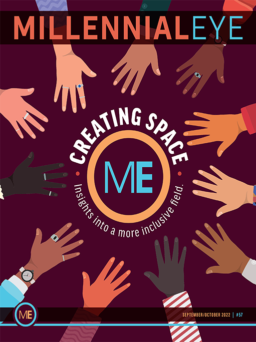
Sheila Barbarino, MD, FACS, FAAO, FAACS
I anticipate one go-to product for my practice will be ATX-101 (Kythera) once it receives FDA approval, which is estimated to happen May 13, 2015. ATX-101 is a formulation of manmade deoxycholic acid that has been developed for nonsurgical reduction of submental fat. The early and late clinical trials have been extremely promising. It’s always prudent to investigate new technology with skeptical eyes, but ATX-101 has been tested over the past 8 years, and, if the clinical trials are correct, this is a safe and effective drug. I am not sure if it will give equivocal results to submental lipo or a platysmaplasty, but patients are asking more frequently what can we do to improve their submental area without surgical intervention. Before ATX-101, the answer was not much, except perhaps a handful of marginally effective laser-tightening treatments that had variable results depending on the patient or Botox (Allergan) to relax the playsmal bands; other than that, surgery was the only honest treatment I could whole heartedly stand behind. As a surgeon, I believe in surgery, but if I could add another effective treatment to my arsenal against the dreaded double chin, it would be my daily go-to treatment for patients who don’t want or cannot have surgery and for those in whom I can obtain the improved appearance without surgery.
One app that I anticipate being valuable for my practice in 2015 is SeamlessMD. This interactive mobile app gives patients pre- and postoperative instructions and reminds them when to take their medications and when to stop eating the day before surgery. As much as I try and my staff tries to effectively explain to patients what to do and when to do it, we cannot go home with them to remind them to follow our instructions to the letter. However, with this app, it’s like setting an alarm on patients’ phones, altering them what to do at exactly the time you want them to do it. I often find patients appreciate this app just as much as I do, especially postoperatively. It’s HIPPA-compliant and can be accessed by the patient and the physician via their smartphones without the patient having the physician’s direct cell phone number. Additionally, this app provides feedback to each provider to see when the patient did what they were supposed to as well as the dosage and collects outcome data on each patient. I believe this is going to be the new gold standard in care for surgical patients, especially older patients who often need constant reminders. Now, if I could only invent an app that reminds my husband what he’s supposed to do each day.
Sheila Barbarino, MD, FACS, FAAO, FAACS, is a cosmetic plastic surgeon specializing in surgery of the eyelids, face, and full body cosmetic plastic surgery at Dell Laser Consultants in Austin, Texas. Dr. Barbarino may be reached at sheila.barbarino@gmail.com.

Robert Kinast, MD
I’m excited for Heidelberg’s new SD-OCT software that will hopefully come out next year. The SD-OCT analysis will hopefully provide more reliable structural analysis that better correlates with function. Each scan will divide the optic nerve head into 12 sectors and analyze both retinal nerve fiber layer and also minimum rim width relative to a stable Bruchs membrane opening. Simultaneous macula scans will be acquired too. The nerve head scans will now be oriented relative to the fovea to avoid photographic rotational error. Best yet, analysis will take into account new normative databases, including ones for race and axial length.
I’ve also enjoyed recently switching to sub-Tenon injections of mitomycin C instead of sponges for trabeculectomy surgery. With sub-Tenon injections, usually a dose of 10 to 20 µg is placed several minutes prior to surgery. Hopefully these injections will produce more diffuse blebs by avoiding the focal, pressurized application of sponges. Mitomycin C has been extensively studied in the past, but there is still much we don’t know about its use. Is the outcome affected if the injection is placed subconjunctival instead of sub-Tenon? Does the length of time postinjection matter? What is the optimal dose? We conducted a study with high-performance liquid chromatography showing that even standard 0.4 mg/mL syringes of mitomyin C contained higher concentration variability than expected (range, 0.24–0.46 mg/mL),1 so compounding exactly 10 µg is likely quite difficult. Fortunately, several ophthalmologists such as Ike Ahmed, MD, and Michele Lim, MD, have reported good long-term data. Hopefully we’ll fine-tune these injections going forward.
Robert Kinast, MD, is the Associate Glaucoma Fellowship Director at the Devers Eye Institute in Portland, Oregon. Dr. Kinast states that he has received research funds in the past from Heidelberg Engineering and Mobius Therapeutics. He may be reached at robertkinast@gmail.com.
1. Kinast RM, Akula KK, Barker, GT, et al. Concentration accuracy of compounded mitomycin C for ophthalmic surgery. American Glaucoma Society Annual Meeting; February 2015; San Diego, CA.

Jenny Yu, MD
It is difficult to pick one go-to product, as there are so many nonsurgical options that augment the aesthetic/oculoplastic practice. I have found that when people are in the exploratory phase of seeking aesthetic services, noninvasive procedures and/or products are a good entre to exploring further services. For me, intense pulsed light therapy (IPL) serves that purpose. This pulsed light technology works great in treating redness related to rosacea to skin resurfacing to hair removal. Patients who are new to aesthetic services love the fact that the IPL treatments provide visible results without many complications. Photofacials (skin resurfacing), treatment for rosacea/blepharitis, and lightening of hyperpigmentation are the most common use of IPL in my practice.
Being in an academic practice, my patient population is a balanced mix of patients who seek IPL treatments for functional/medical reasons and those who seek it for cosmetic improvements. Although lasers and neurotoxin/filler injections are also great complements to an oculoplastic/aesthetic practice, the noninvasiveness of IPL is more acceptable for patients who are seeking a quick fix.
Jenny Yu, MD, is an Associate Program Director, Ophthalmology Residency Training Program, Department of Ophthalmology, and the Vice Chair of Clinical Operations at UPMC Eye Center. Dr. Yu is also serves on the Orbital, Oculoplastic, and Aesthetic Surgery Service, and is an Assistant Professor of Ophthalmology at the University of Pittsburgh. She may be reached at yuj3@upmc.edu.





